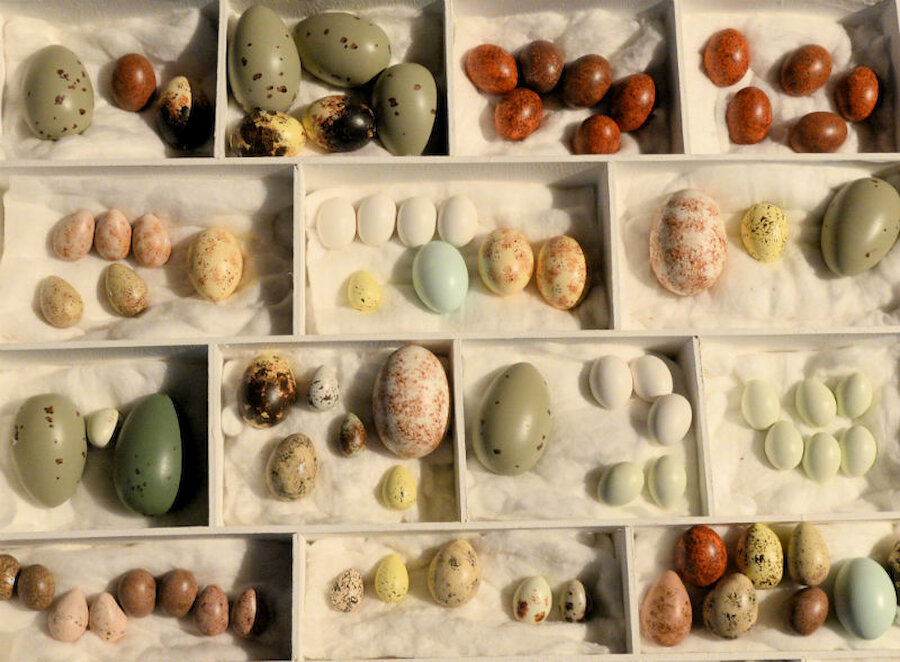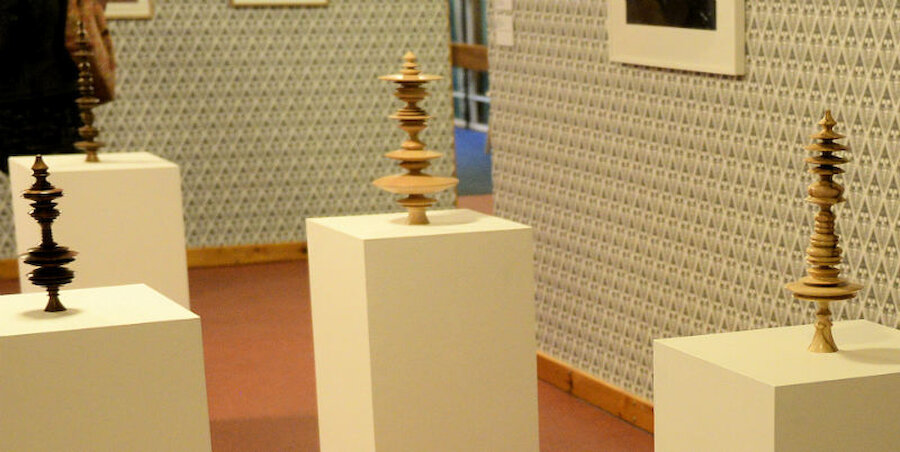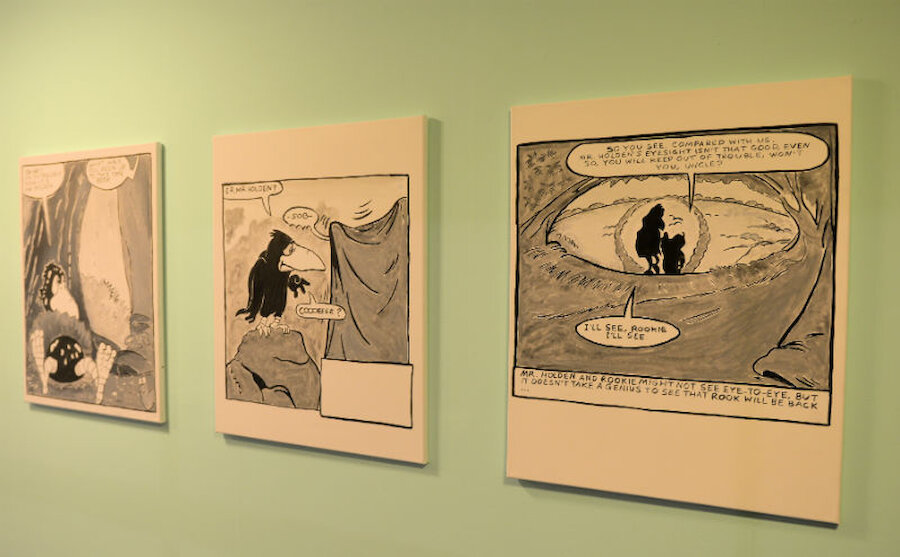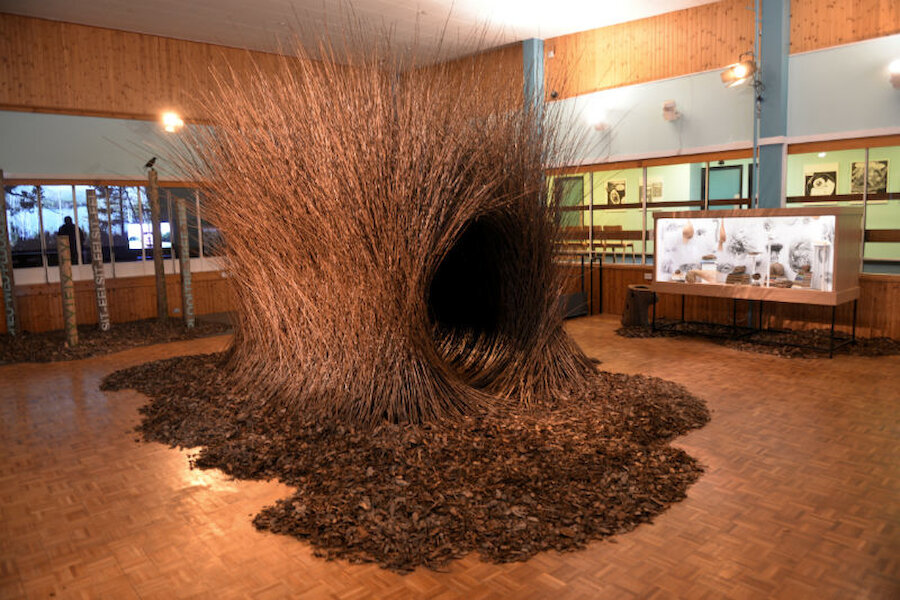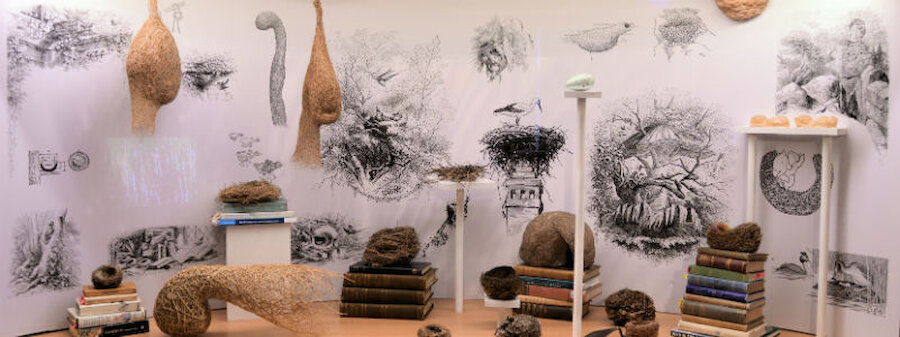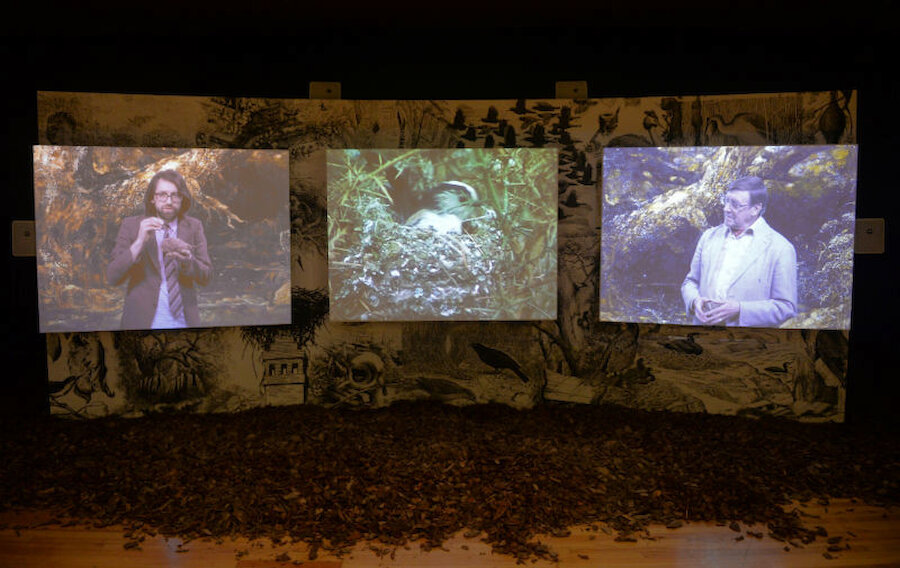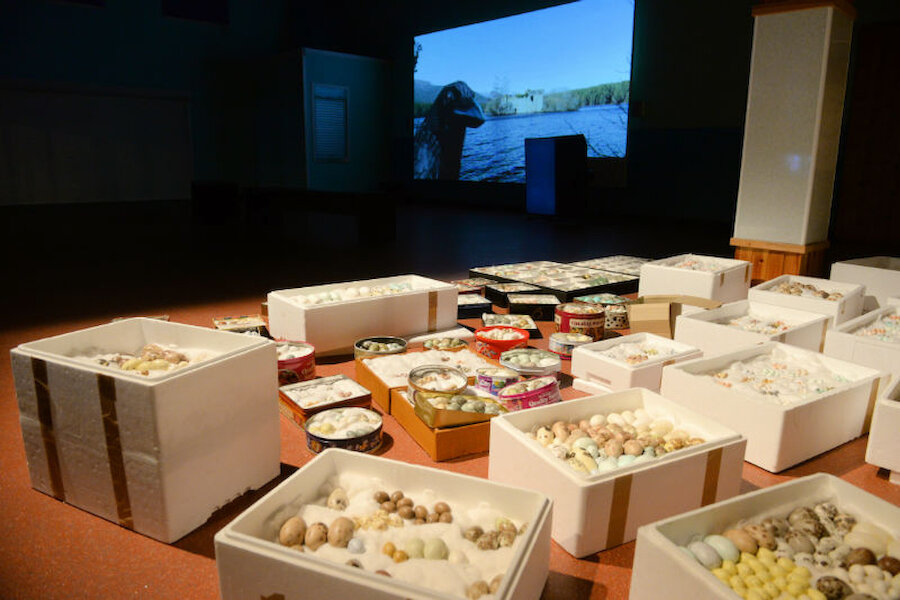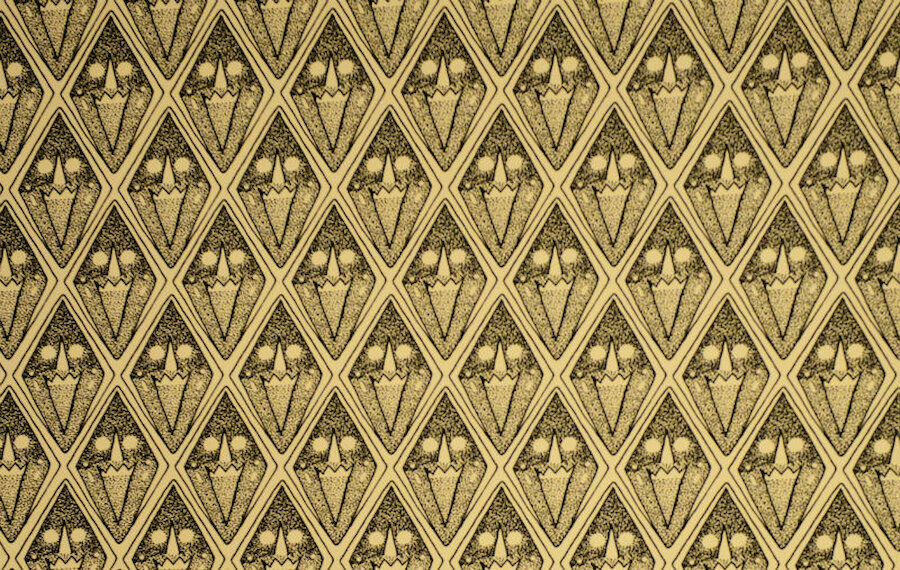Natural Selection is a remarkable project conceived and produced by Andy Holden and his father, Peter. By turns intriguing, revealing, disarmingly eccentric and very beautiful, it has been drawing visitors to the former Anderson High School in Lerwick, where it occupies the entrance lobby, hall, stage and dining room.
There are several parts to the show. On entering, the visitor is struck by what might at first glance be a series of Japanese wood carvings. In fact, they’re sculptures that have been turned in wood using, as a pattern, sonograms (sound maps) of bird song. It’s a lovely idea and it’s executed to perfection. This room has been wallpapered using hand-printed paper and the pattern is derived from the shape of a cuckoo’s mouth.
In the adjoining corridor, there are cartoons that Andy Holden first encountered in the magazine Bird Life, published for members of the RSPB’s Young Ornithologists’ Club, for which his father Peter was responsible. They feature a mischievous crow, and we meet that character again in one of the two audio-visual programmes that form part of the exhibition.
Moving into the hall, the room is dominated by a super-sized reproduction of the bower created by male bower birds. It’s a really striking centrepiece; but then again, that’s exactly what male bower birds aim to create. Having constructed the bower, the male bird decorates it in the way which he hopes will attract a potential mate, using a variety of found – often man-made – objects. The bower isn’t used as a nest but instead is simply the stage for a courtship ritual; and Charles Darwin reckoned that the bower bird was the closest thing to an artist found in nature. On that theme, another appealing element in the presentations is the inclusion, in backgrounds, of paintings by a range of artists including Turner, Constable and Hockney.
Nearby, there are displays of nests and feathers and, up on the stage, three screens are used to project a video installation, A Natural History of Nest Building. Andy and Peter Holden appear from time to time at either side, demonstrating the extraordinary variety of nest structures and linking them both to Darwinian thinking about natural selection and to the notion of nest-building as a “considered creative act”. They remark on the extraordinary ability of the one year old long-tailed tit to create one of the most elegant nest forms known.
Also included in the presentation on show are vast nest structures that occupy large parts of trees or are constructed on telegraph or electricity poles. We see, too, the ruthlessness of the cuckoo and – perhaps even more dramatically – its chick.
The last parts of the exhibition are in the dining room, where a second video presentation introduces us to the social history of egg collecting. That may sound somewhat niche, but in fact it’s a fascinating account of the evolution of egg collecting, the steps taken to prevent it and the characters involved, narrated by an animated version of that crow we met at the beginning. We learn, for example, of the efforts made to protect the osprey nest near Loch Garten on Speyside, and of the time when members of the egg-collecting Jourdain Society, enjoying the sweet course at their annual dinner at a Salisbury hotel in 1994, found themselves surrounded by 16 policemen. That intervention led to raids on many homes, the recovery of 11,000 eggs and six convictions.
The story provokes thoughts about the changing motives that drove egg collecting, beginning with the 19th century desire to undertake scientific classification of the natural world and ending with a more basic obsession with capturing as many rarities as possible, with, of course the risk that – were egg-collecting to be widely practised – those rarities would face extinction. As a reminder of the scale of some egg collectors’ activities, there’s a striking display – in replica form – of a collection of 7,130 eggs that were found during a police raid on one collector’s home.
It’s entirely appropriate that this exhibition should have come to Shetland, where birds and bird-watching are such a central part of life. There are parallels in local history too: in the 19th century, Shetland had its own amateur natural historians who collected not only eggs but stuffed bird specimens. The Edmondston family in Unst were in regular contact with Charles Darwin as he honed his theory of natural selection. In more recent times, certainly up to the 1990s, egg collectors from elsewhere in the UK and mainland Europe were active in the islands, like the man from Devon who was convicted for stealing eggs from Shetland nests. So, this story resonates here.
The exhibition is presented by Artangel and there’s more information on their dedicated website.

